Lawn Sale
New member
- Joined
- Jun 14, 2005
- Messages
- 899
- Reaction score
- 97
My wife and I saw an article last year in Backpacker magazine for the Bold Coast of Maine, just east of Cutler (way downeast). We decided to give it a try and had a great time. She wanted to go back again this year so we hit the trail on May 31.
We got to the trailhead at 6:30PM and were hiking by 6:40, and my wife Terry led the way at a good clip since she wanted to beat the darkness (despite having headlamps). We made the 4.5 miles of the Inland Trail in under 2 hours, just beating the dark, but all the campsites were full despite the log at the trailhead showing two open. It was pretty wet after the rains and we were not about to hike back out after hiking in for 2 hours and driving 160+ miles to get there, so we opted for an 'alternate' campsite. It was still LNT and I was glad I brought the free-standing tent.
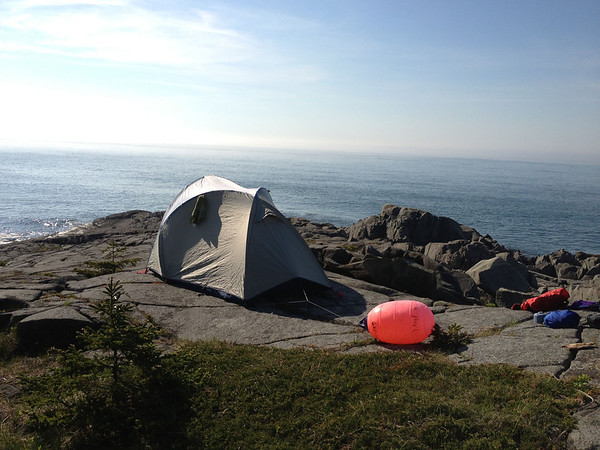
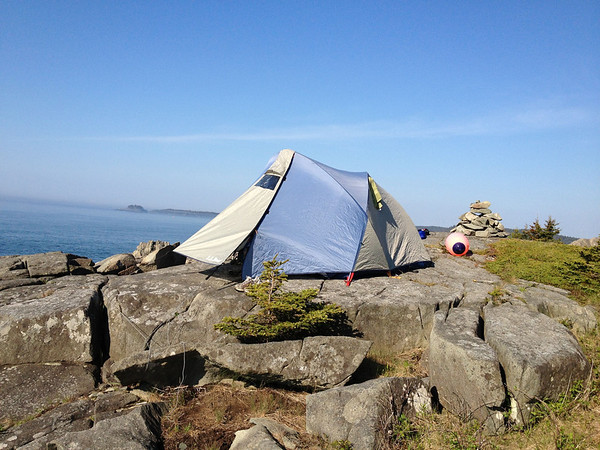
(The buoy is used as a seat, the tent is not tethered to it despite looking like it in the picture)
We cooked dinner, played a game of cribbage, and hit the sack around midnight. There were no bugs other than the June bugs who liked our lantern, so we set it back from the campsite.
This view in the morning absolutely did not suck.
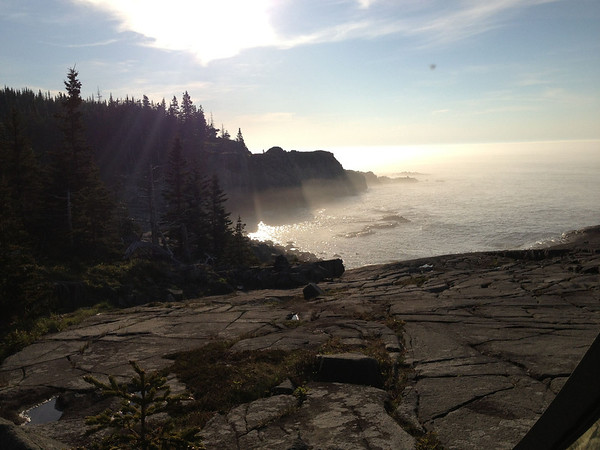
We got up and cooked breakfast of coffee and Eggs McMark.
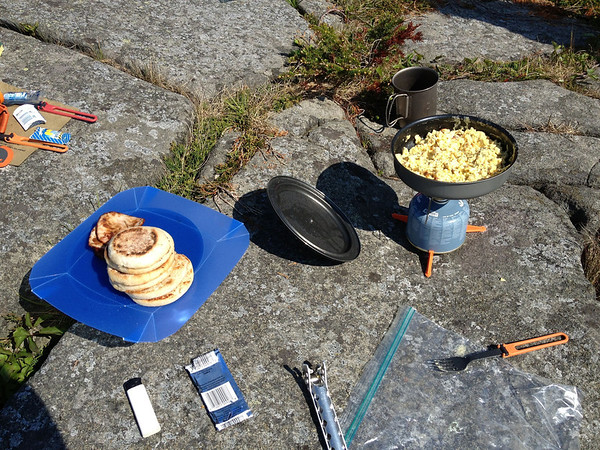
Then set about getting water for the day. We'd brought in a gallon of fresh, but between the fast hike in, the evening meal (dirty rice with garlic chicken sausage), and the morning activities, we were almost out. We'd been there before and could find no reliable clean sources from which to filter. Last year my MSR WaterWorks filter needed cleaning 3 times due to the extremely turbid water found nearby. Even after filtering, it still looked like tea due to the tannins and colloidal solids that passed through the 0.2 micron filter, so this year I brought along a little something to (hopefully) deal with it.
Here is the water source. Even the smaller ones nearby (within 1/2 hour) were in the same shape. Nasty looking.
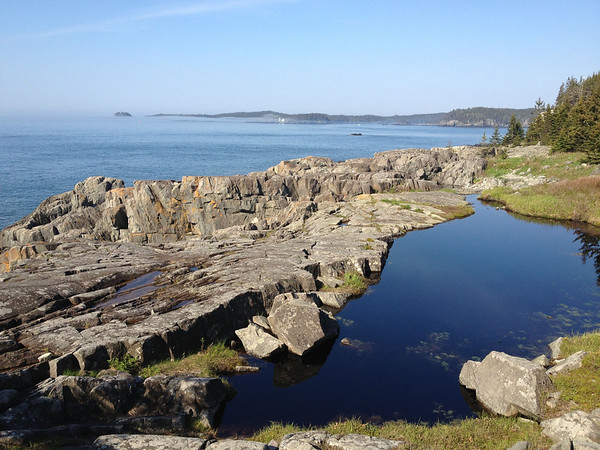
I grabbed some polyaluminum chloride from work (I am licensed in all forms of water treatment) and diluted it to a 2/3 ratio. The trick is getting the dilution factor and the ionic charge correct, if either one is too far off, it won't work. Luckily the ionic charge of the water there was correct (cationic), which is part of what causes the water not to clarify naturally. Think of it like magnets: like charges repel one another and thus stay the same distance apart; couple this with the small mass and volume of the particles, and they never settle out. What I did was use an ionic polymer to change the ionic charge of some of the particles, so they'd attract to one another rather than repel, get heavy due to the increased mass, and settle out, leaving clear water behind (supernatant). As you can imagine, if the dosage is off, too many or too few particles will be 'flipped' and it won't work, but there is some variability. I guessed correctly at 10,000:1 and the water clarified like a dream.
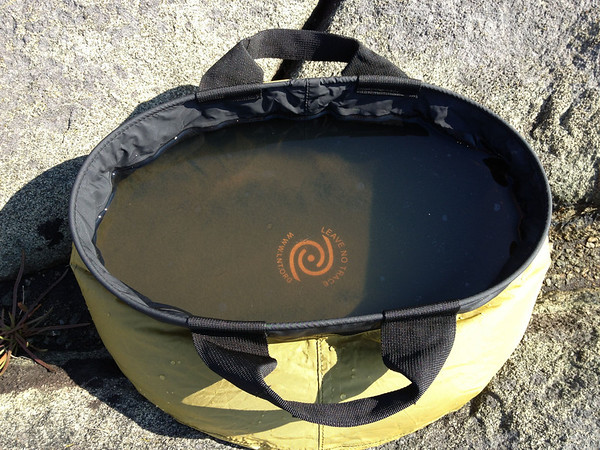
I then filtered the remaining clear water and zapped it with the SteriPen, and we had water for the day.
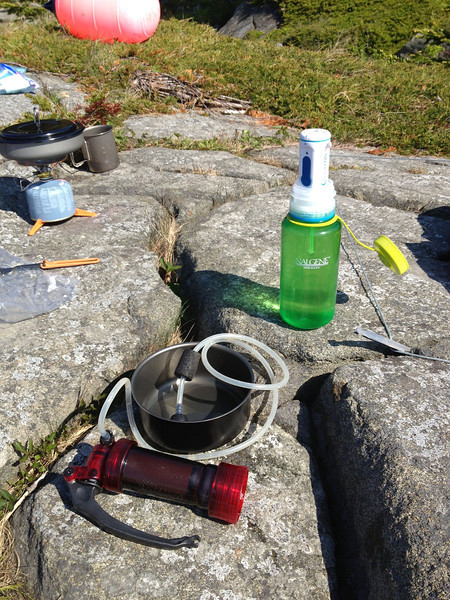
I know some of you are wondering, but we took the solids left over and dumped them in the outhouse. The small amount of solids left behind are just concentrated and the PACl is a NSF approved non-toxic compound used for potable water treatment, so it's not a pollutant, not that the 0.9 ml's I used would do anything anyway.
I had some water left over in the dromedary bag after the hike, so I ran some coliform bacteria tests on it in my lab, and it came out perfect: no total, fecal, or e-coli present at all.
We hiked out the coastal trail taking our time and enjoying the sights. There were no bugs until we stopped moving for more than a few minutes, and then the black flies found us since there was no wind. The views along the way are well worth the trip. We saw a lot of people with dogs and all were well behaved, so it is a dog-friendly hike. The hike out was 3.8 miles along the coast and then another 1.5 back to the trailhead through the woods. It's well worth the trip.
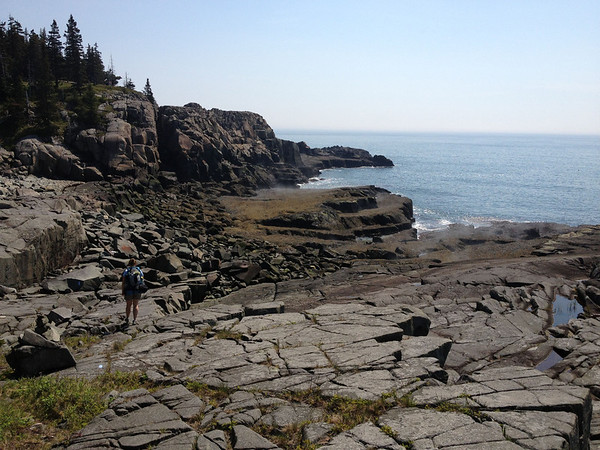
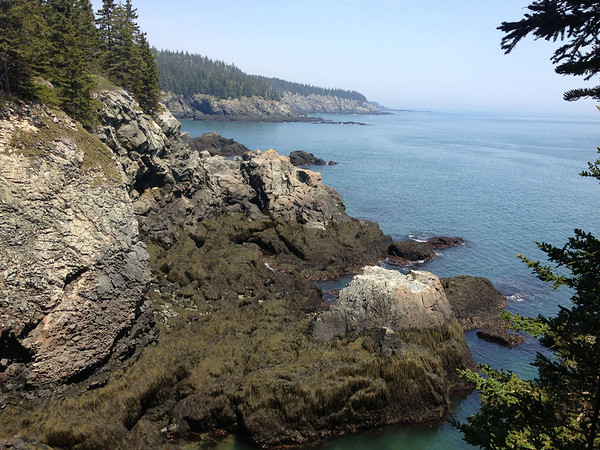
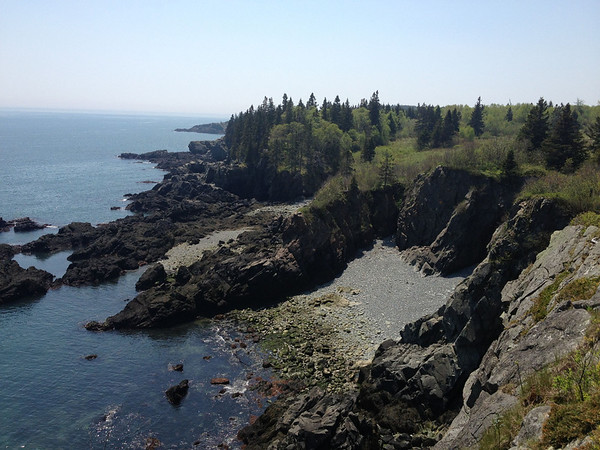
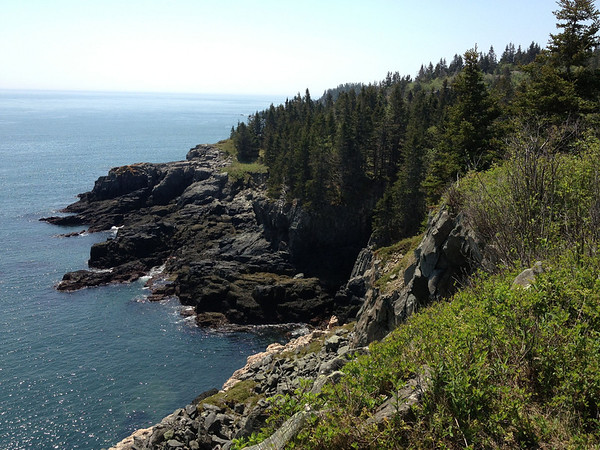
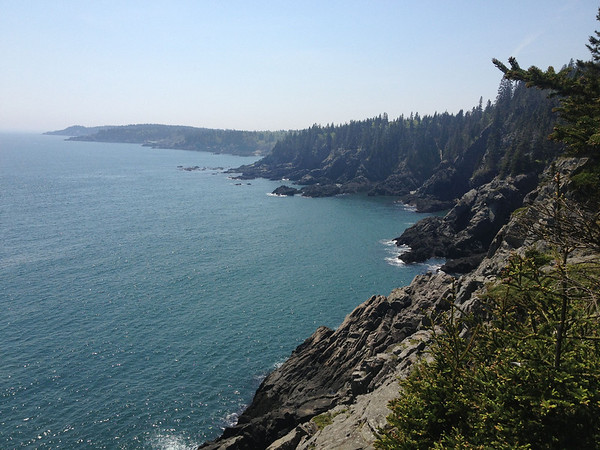
We got to the trailhead at 6:30PM and were hiking by 6:40, and my wife Terry led the way at a good clip since she wanted to beat the darkness (despite having headlamps). We made the 4.5 miles of the Inland Trail in under 2 hours, just beating the dark, but all the campsites were full despite the log at the trailhead showing two open. It was pretty wet after the rains and we were not about to hike back out after hiking in for 2 hours and driving 160+ miles to get there, so we opted for an 'alternate' campsite. It was still LNT and I was glad I brought the free-standing tent.


(The buoy is used as a seat, the tent is not tethered to it despite looking like it in the picture)
We cooked dinner, played a game of cribbage, and hit the sack around midnight. There were no bugs other than the June bugs who liked our lantern, so we set it back from the campsite.
This view in the morning absolutely did not suck.

We got up and cooked breakfast of coffee and Eggs McMark.

Then set about getting water for the day. We'd brought in a gallon of fresh, but between the fast hike in, the evening meal (dirty rice with garlic chicken sausage), and the morning activities, we were almost out. We'd been there before and could find no reliable clean sources from which to filter. Last year my MSR WaterWorks filter needed cleaning 3 times due to the extremely turbid water found nearby. Even after filtering, it still looked like tea due to the tannins and colloidal solids that passed through the 0.2 micron filter, so this year I brought along a little something to (hopefully) deal with it.
Here is the water source. Even the smaller ones nearby (within 1/2 hour) were in the same shape. Nasty looking.

I grabbed some polyaluminum chloride from work (I am licensed in all forms of water treatment) and diluted it to a 2/3 ratio. The trick is getting the dilution factor and the ionic charge correct, if either one is too far off, it won't work. Luckily the ionic charge of the water there was correct (cationic), which is part of what causes the water not to clarify naturally. Think of it like magnets: like charges repel one another and thus stay the same distance apart; couple this with the small mass and volume of the particles, and they never settle out. What I did was use an ionic polymer to change the ionic charge of some of the particles, so they'd attract to one another rather than repel, get heavy due to the increased mass, and settle out, leaving clear water behind (supernatant). As you can imagine, if the dosage is off, too many or too few particles will be 'flipped' and it won't work, but there is some variability. I guessed correctly at 10,000:1 and the water clarified like a dream.

I then filtered the remaining clear water and zapped it with the SteriPen, and we had water for the day.

I know some of you are wondering, but we took the solids left over and dumped them in the outhouse. The small amount of solids left behind are just concentrated and the PACl is a NSF approved non-toxic compound used for potable water treatment, so it's not a pollutant, not that the 0.9 ml's I used would do anything anyway.
I had some water left over in the dromedary bag after the hike, so I ran some coliform bacteria tests on it in my lab, and it came out perfect: no total, fecal, or e-coli present at all.
We hiked out the coastal trail taking our time and enjoying the sights. There were no bugs until we stopped moving for more than a few minutes, and then the black flies found us since there was no wind. The views along the way are well worth the trip. We saw a lot of people with dogs and all were well behaved, so it is a dog-friendly hike. The hike out was 3.8 miles along the coast and then another 1.5 back to the trailhead through the woods. It's well worth the trip.





Last edited:
